Politics
Signs of the Times: Museums Are Collecting Protest Posters From the 2018 Women’s March
Curators focused on themes that have emerged since the 2017 march, such as DACA and #TimesUp.
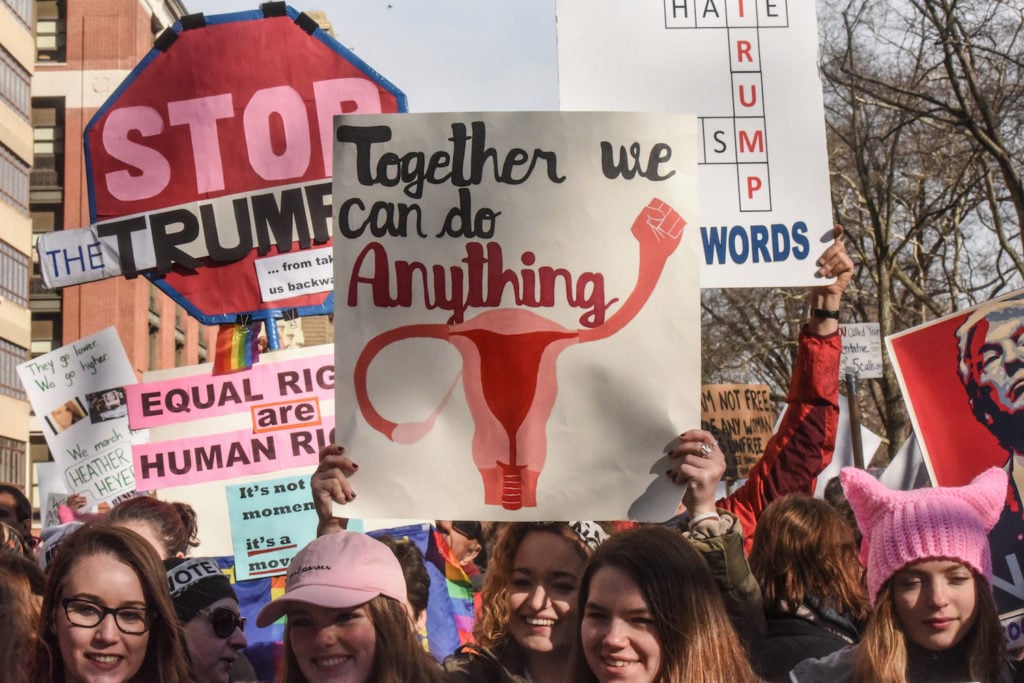
Curators focused on themes that have emerged since the 2017 march, such as DACA and #TimesUp.

Sarah Cascone

A year into the presidency of Donald Trump, the resistance movement is still proving strong as thousands gathered across the country this past Saturday for the second Women’s March.
Of the many thousands of protest signs that proclaimed opposition to Trump and his anti-woman, anti-immigrant rhetoric—which led to a legit poster board shortage in the US—a select few are destined for posterity, thanks to the forward-thinking curators at institutions such as the New-York Historical Society, the Museum of the City of New York, and the Smithsonian’s National Museum of American History in Washington, DC.

Elaine Maas, sign for the Women’s March on New York City (2017). Courtesy of the New-York Historical Society.
“We were very energetic collectors of the initial Women’s March last year, and we wanted to follow up and add to that collection,” New-York Historical Society vice president and director Margi Hofer told artnet News, noting that staff members were collecting with an eye toward material that reflected changes over the past year, such as signs referencing #MeToo and #TimesUp, or the “Power to the Polls” movement in the run-up to midterm elections.
“The blue wave motif was very omnipresent and new to this year’s march,” she added. “The idea is representing the power of Democratic voters.”
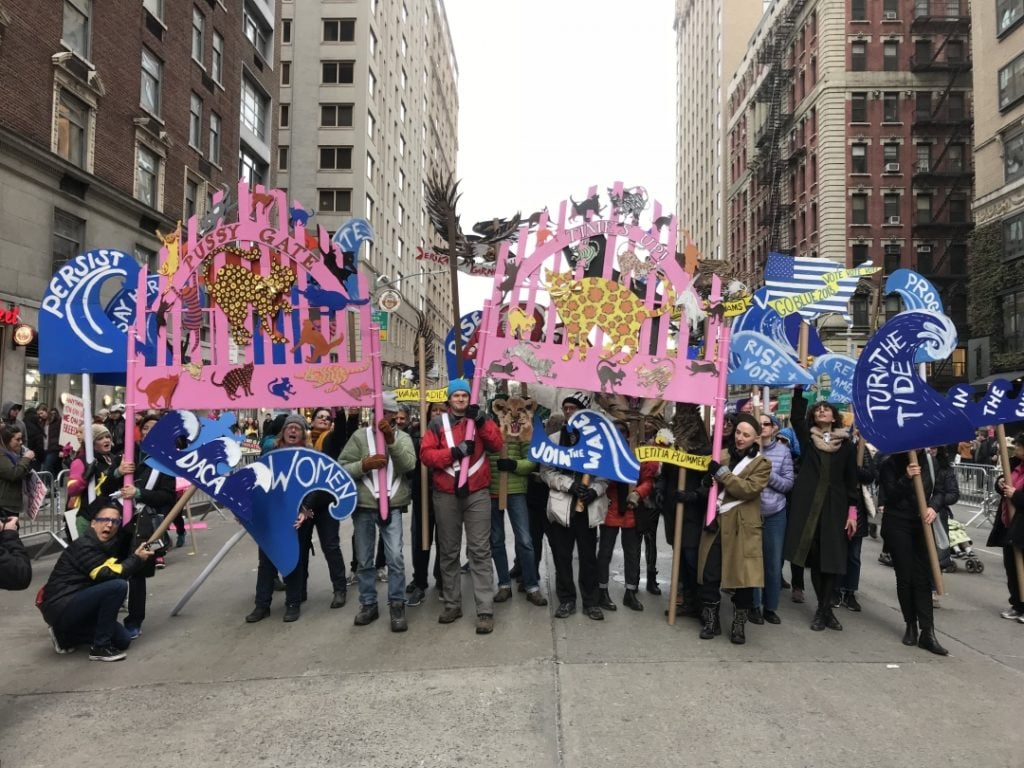
We Make America signs at the New York Women’s March in 2018. Photo courtesy of Deborah Stein.
The artist collective We Make America, which counts feminist artist Joyce Kozloff among its leaders, created an elaborate tableaux of blue waves and “Pussy Gate” signs as they took to the street in New York this weekend. The group also donated Statue of Liberty-themed signs to the Historical Society following last year’s march.
This time around, the Historical Society also selected signs in support of immigrants and the extension of Deferred Action for Childhood Arrivals, protecting undocumented immigrants who arrived in the US as children.
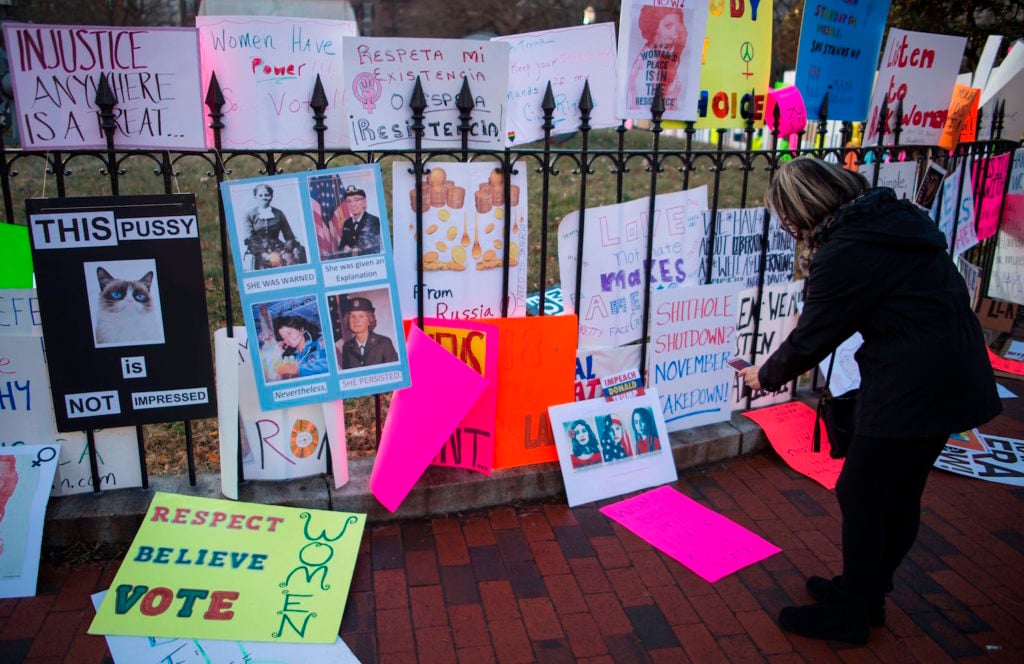
A woman photographs signs left in Lafayette Square after the Women’s March on Washington in 2018. Photo courtesy of Andrew Caballero-ReynoldsAFP/Getty Images.
One trend you likely won’t see in upcoming exhibitions? Posters replacing Trump’s mouth with a less savory part of the anatomy—a common reference to the controversial, derogatory term he allegedly used to refer to Haiti and other countries. “Our focus is more on showing how people are mobilizing in positive ways rather than simply signs that are being critical of his remarks,” said Hofer. “Our primary concern is capturing this moment for future generations.”
There are no immediate plans to exhibit artifacts from the 2018 marches, but “Collecting the Women’s Marches,” featuring pussyhats, signs, posters, and photographs from last year’s event, opened at the New-York Historical Society on Friday. “It really captures the energy and the creativity around that event,” said Hofer.
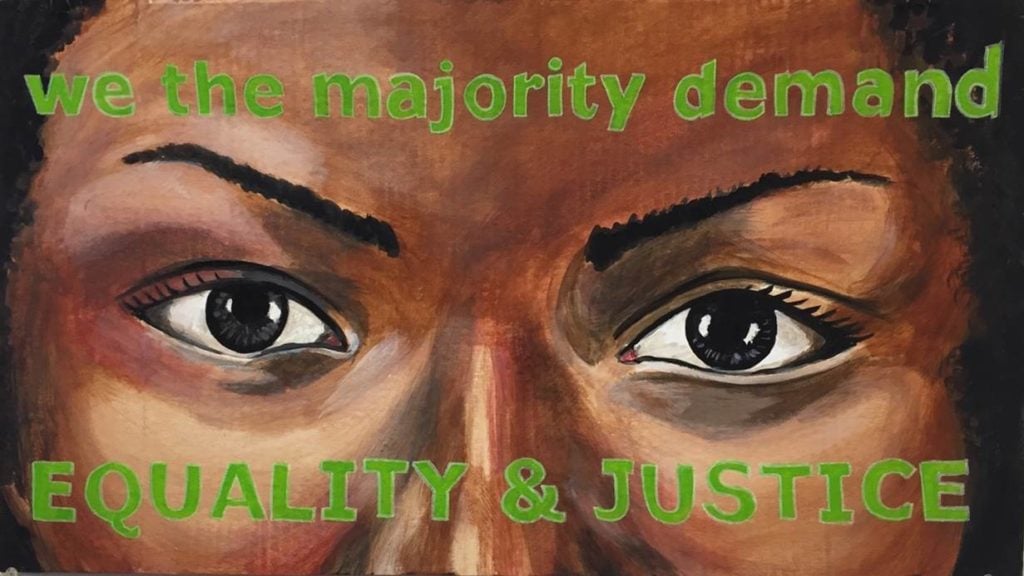
Women’s March poster (2017). Courtesy of the Museum of the City of New York.
You can also catch posters and other objects from New York’s 2017 march at the Museum of the City of New York in “Beyond Suffrage: A Century of New York Women in Politics.” As it does with other major activist events, the museum solicited donations of objects following the march.
In honor of the protest’s one-year anniversary, the museum posted a video on Twitter of marchers carrying a parachute that honored historic feminists at the march. The parachute is among the highlights of the current exhibition, which includes other Women’s March signs. A representative of the museum told artnet News in an email that there were no set plans to collect additional materials from the 2018 march.
Held aloft at the 2017 NYC Women’s March, this parachute representing collaboration and inclusion is now on display as part of our exhibition #BeyondSuffrage. https://t.co/BJiyW0l4Bq pic.twitter.com/qjTI1yVTYM
— MuseumoftheCityofNY (@MuseumofCityNY) January 22, 2018
In DC, the Smithsonian’s American History museum amassed about 30 posters and 20 other objects from the city’s march, making an effort to represent the various different issues being addressed by protesters. A “Black Lives Matter” poster from the 2017 march is currently on view in the museum’s “American Democracy” exhibition.
“The museum has a long history, stretching back to the [1963] March on Washington, of collecting materials from protests, and rallies, and marches, and those occasions when citizens get together to make their voices heard, and exercise their First Amendment rights,” Lisa Kathleen Graddy, a curator in the museum’s political history division, told the Cut last week. Because of the government shutdown, Graddy wasn’t available for comment today, but the museum had plans to collect artifacts in DC this past weekend.
See more photos from the 2018 Women’s March below, as well as artifacts from the 2017 march, now in the collection of the New-York Historical Society.
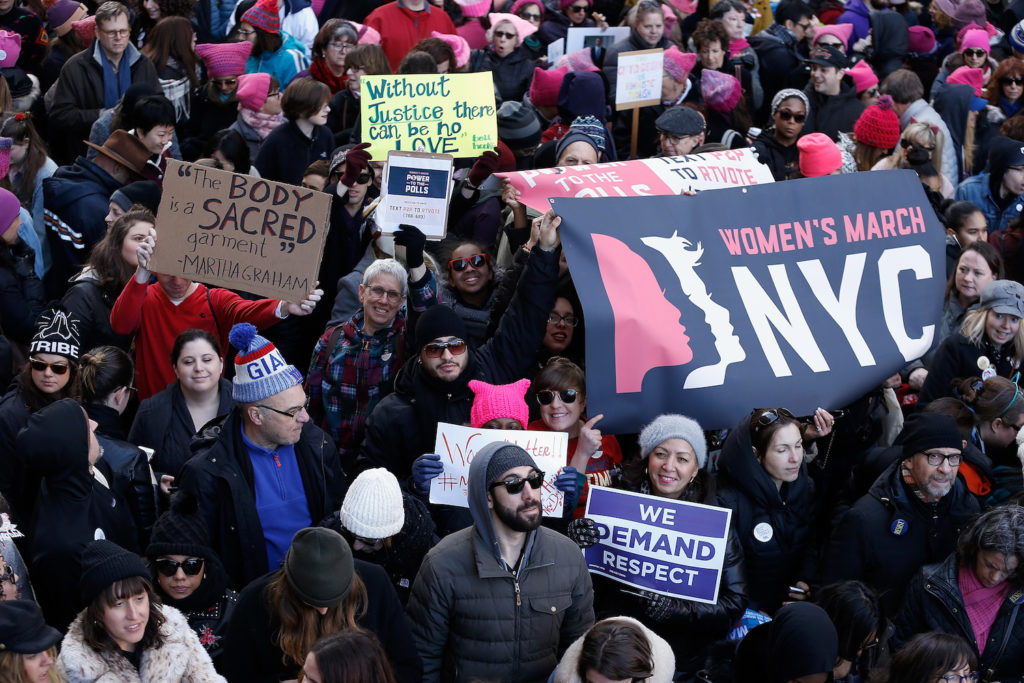
Demonstrators seen during the 2018 Women’s March in New York City on January 20. Photo courtesy of John Lamparski/Getty Images.
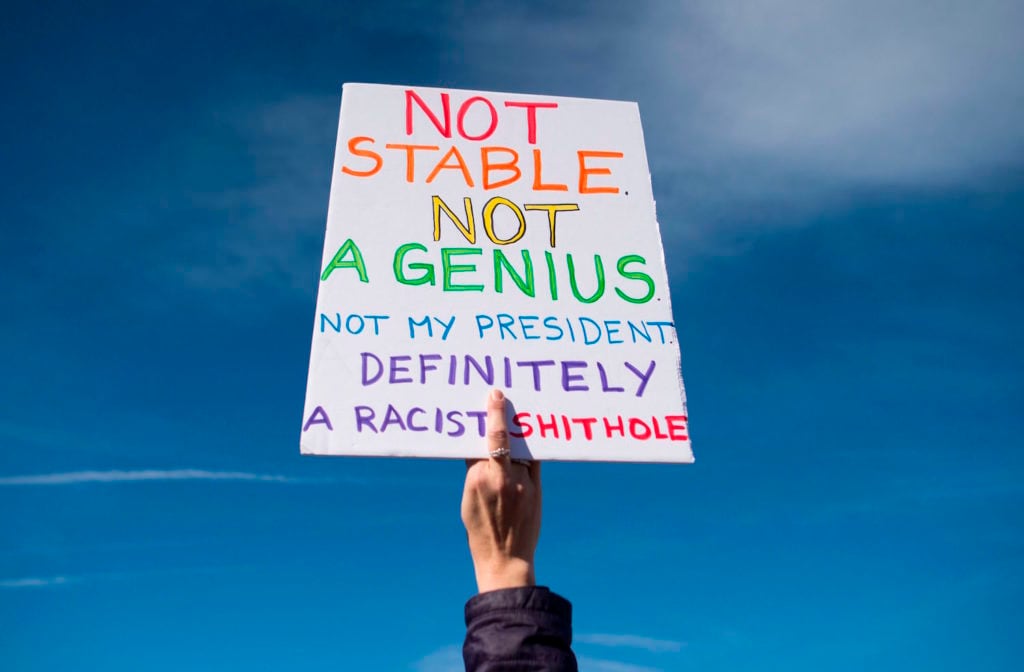
A woman holds up a sign during the Women’s March on Washington DC, 2018. Photo courtesy of Andrew Caballero-ReynoldsAFP/Getty Images.
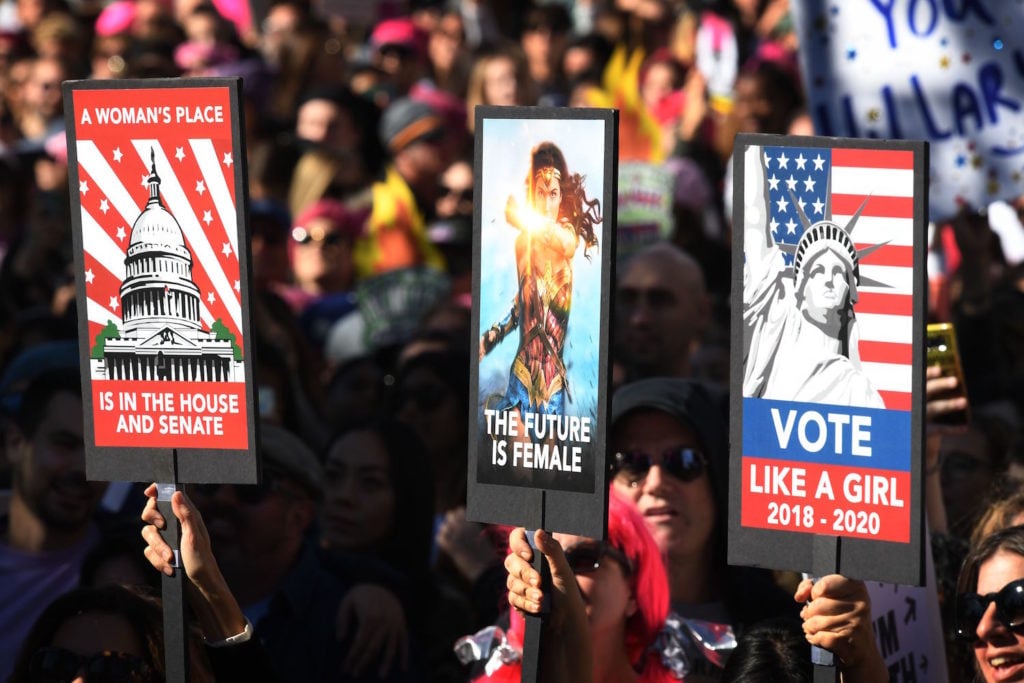
Protesters, part of a 500,000-strong crowd in Los Angeles, raise their hands during the Women’s Rally on the one-year anniversary of the first Women’s March, when millions marched around the world to protest US President Donald Trump’s inauguration. Photo courtesy of Mark Ralston/AFP/Getty Images.
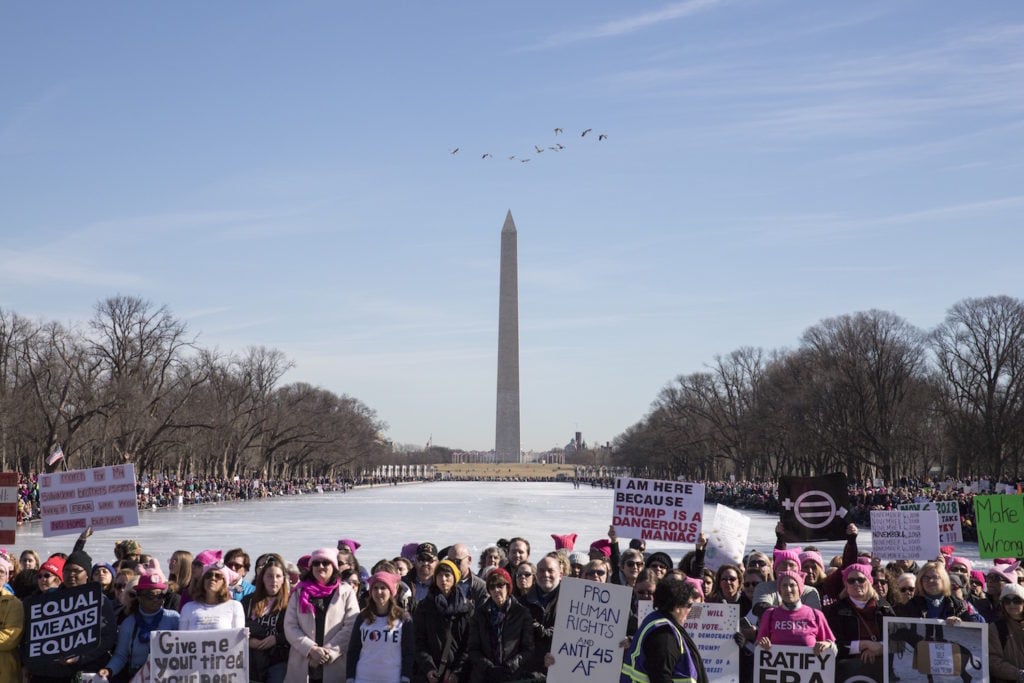
People gather at the Lincoln Memorial reflecting pool to rally before the Women’s March on January 20, 2018, in Washington, DC. Photo courtesy of Alex Wroblewski/Getty Images.
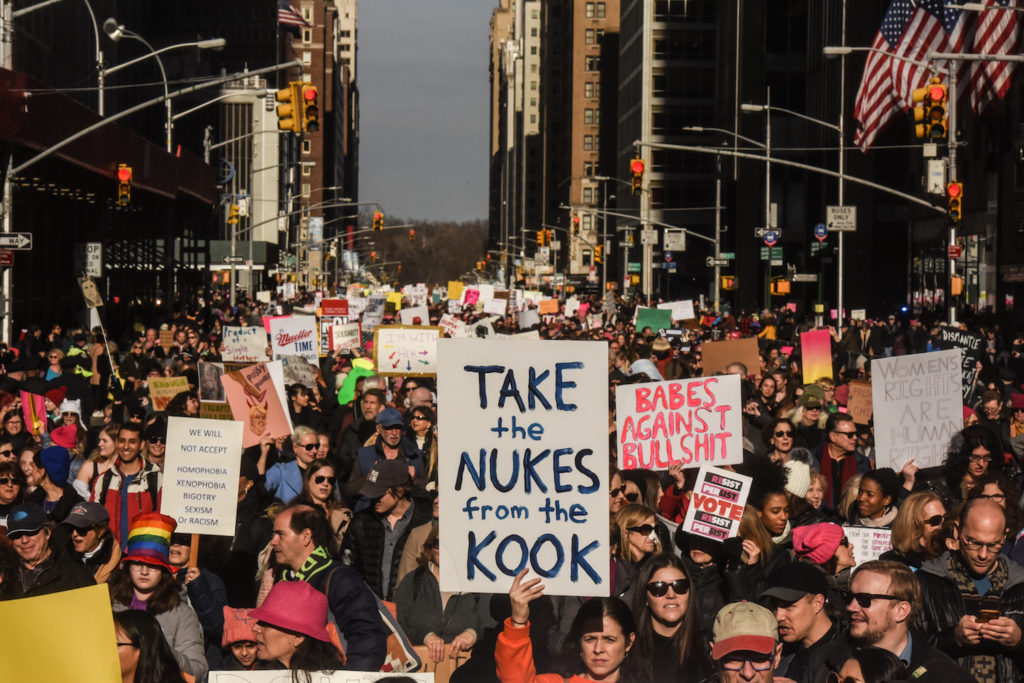
A large crowd participating in the Women’s March makes its way down Sixth Avenue in Manhattan on January 20, 2018. Photo courtesy of Stephanie Keith/Getty Images.
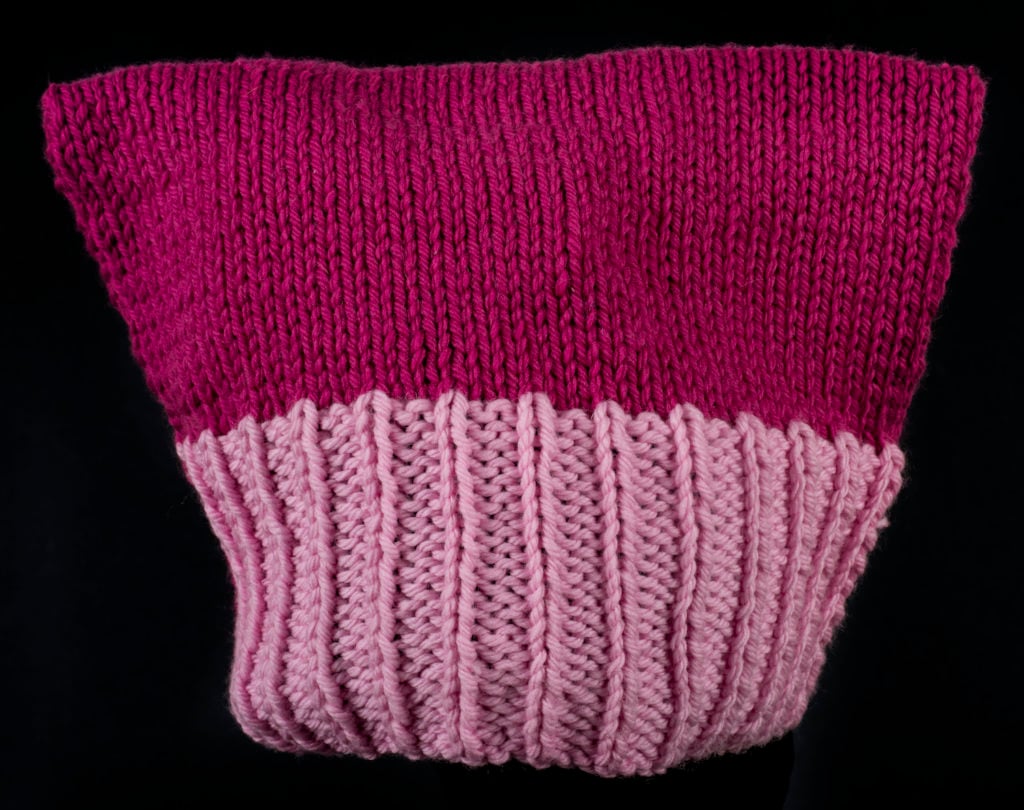
Lori Steinberg, Pussyhat worn at Women’s March on Washington (2017). Courtesy of the New-York Historical Society.
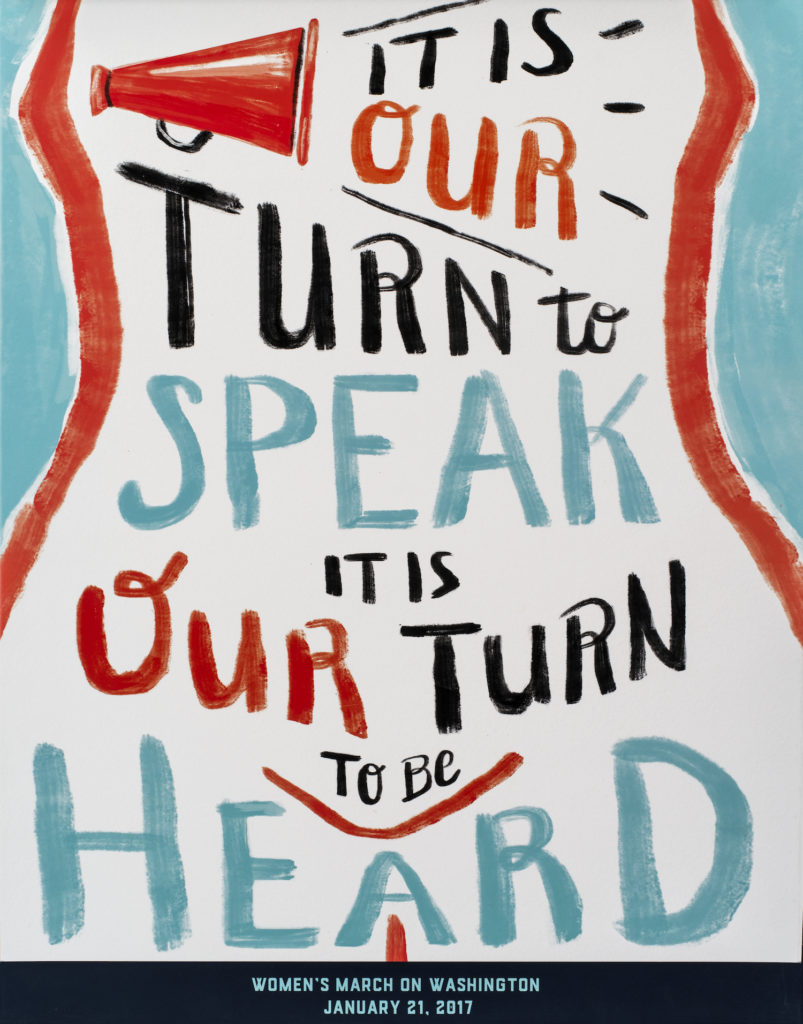
Jen Keenan, poster for the Women’s March on Washington, New York City Chapter (2017). Courtesy of the New-York Historical Society.

Elaine Maas, Sign for Women’s March on New York City (2017). Courtesy of the New-York Historical Society.